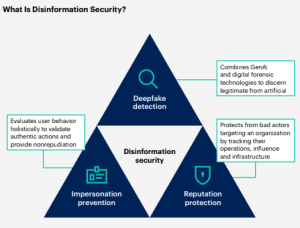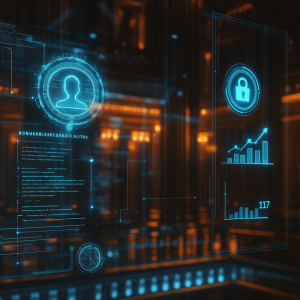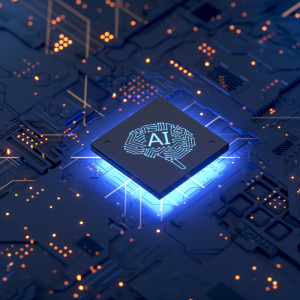Cybersecurity

Key Takeaway:
Cybersecurity is shifting from background noise to boardroom priority. AI is simultaneously escalating threats—through deepfakes, scams, and model manipulation—and enabling next-gen defenses, from real-time detection to disinformation security. As quantum computing and generative media advance, new tools like quantum-safe encryption, self-sovereign identity, and data clean rooms are emerging. But with only 30% of companies prepared for AI-driven attacks, readiness remains low. Cyber resilience now depends on treating networks as frontline defenses, securing both IT (information technology) and OT (operational technology), and embedding trust into every layer of digital infrastructure.
Trend Type: Technology
Sub-trends: Cybersecurity, AI in Cybersecurity, Cybersecurity New Threats
From Fatigue to High-Stakes Transformation
Cybersecurity may no longer feel like a ‘shiny new thing,’ but its strategic urgency is only growing. While some executives claim fatigue—arguing it’s been over-discussed—the reality is that the threat landscape is evolving faster than ever. The reality is, AI is both a weapon and a shield. According to Accenture’s Life Trends 2025 report, one of users’ top concerns for the year is the inability to verify digital information—a crisis fueled by advances in video generation from OpenAI and Google, and the explosion of deepfakes, scams, and AI-driven fraud. Nearly every organization surveyed (97%) in a recent Cisco report experienced breaches or incidents related to generative AI over the past year.
Yet AI is also elevating defense. Forbes forecasts a shift toward AI-augmented cybersecurity, where automated systems accelerate detection and incident response. According to the Cisco AI Readiness Index, only 30% of companies globally say they’re equipped to manage AI-driven threats, suggesting a significant readiness gap. Still, industry executives already rank GenAI for cybersecurity as the top trend impacting their organizations—a signal that awareness is catching up with risk.
New Tools, New Threats, New Rules
The expanding surface area of cyber risk is prompting investment in new technical and governance tools. Gartner predicts that by 2028, 50% of enterprises will adopt “disinformation security” solutions—tools designed to verify content, prevent impersonation, and trace provenance—up from less than 5% in 2024. At the same time, privacy-first solutions like data clean rooms are maturing. As outlined in Kantar’s 2024 reports, clean rooms (secure environments where companies can combine and analyze sensitive data sets without exposing personal or proprietary information) are becoming essential infrastructure for secure data collaboration, with companies like Kantar Media focusing on refining consent management and data quality pipelines.

Source: Gartner 2024 - “What is Disinformation Security?”
This is no longer just an IT issue. Increasing attacks on critical infrastructure and operational technologies are pushing companies to secure both IT and OT systems. As Kyndryl reports, cybersecurity is now key to overall business continuity and supply chain resilience. In parallel, the rise of ubiquitous computing, growing reliance on cloud infrastructure, and the fragility of digital ecosystems are heightening exposure. As networks become the central nervous system of the enterprise, Cisco notes, they must now serve as both sensor and shield—providing visibility and enforcing security policies at scale.
Quantum-Safe, Identity-Smart, and AI-First
In 2025, we’ll also see a pivot toward quantum-ready security. With the horizon of cryptographically relevant quantum computers drawing closer, companies are beginning to implement quantum-resistant protocols. As Forbes notes, post-quantum cryptography is gaining traction as a core component of modern cybersecurity architecture. This aligns with the regulatory direction: U.S. initiatives like CMMC 2.0 and global actions such as Europe’s Digital Services Act are pushing for higher compliance standards and more proactive cyber defense.
Identity, too, is evolving. Self-sovereign identity (SSI) frameworks—designed to give individuals control over their digital identities without relying on centralized authorities—are becoming critical for enabling trust in increasingly fragmented digital environments. This ties into another growing frontier: detecting and managing AI-generated content. As generative media floods social and commercial channels, the need for scalable authenticity verification—whether via blockchain, metadata tagging, or content provenance standards—is now a core cybersecurity concern.
Use Cases
Cybersecurity: Russia, Iran & China were all planning to disrupt the US election via online disinformation, according to the head of Microsoft Threat Analysis (MTAC). Analysts at MTAC advise governments, like US, as well as private companies about variety of digital attempts to destabilise democracy in different countries. Look behind the scenes of the high-security facility that was monitoring digital threats ahead of the US election.
AI In Cybersecurity: Cybersecurity professionals are in short supply. How can companies boost the efficiency of their existing cybersecurity staff? In this video, Jeff “the security guy” explains how AI can act as a force multiplier that help you address security threats more effectively.
Use Cases
Sub-Trend Sources
Cybersecurity: BBVA Spark Tech Trends, Delloite TMT Predictions, Forbes Tech Predictions, Gartner: Top10 Strategic Tech Trends, Kantar's Media Trends & Predictions, Kyndryl.
AI in Cybersecurity: Capgemini Top Tech Trends
Cybersecurity New Threats: Cisco Trends
What to Read Next
Energy Challenge
The Collision of AI and Energy Demand The rise of generative AI is not only transforming digital landscapes—it’s also reshaping the global energy equation. According to Deloitte, the rapid expansion[...]
IT Amplified
The Rise of AI-Driven IT Transformation As the tech function evolves from leading digital transformation to leading AI transformation, IT is being amplified across every dimension. Deloitte’s foresight analysis suggests[...]
Flexible AI
The Rise of Specialized AI Models As organizations adopt hybrid models to balance flexibility and control, they are also rethinking how AI is deployed across environments. While foundational models built[...]
What to Read Next
Energy Challenge
The Collision of AI and Energy Demand The rise of generative AI is not only transforming digital landscapes—it’s also reshaping the global energy equation. According[...]
IT Amplified
The Rise of AI-Driven IT Transformation As the tech function evolves from leading digital transformation to leading AI transformation, IT is being amplified across every[...]
Flexible AI
The Rise of Specialized AI Models As organizations adopt hybrid models to balance flexibility and control, they are also rethinking how AI is deployed across[...]


